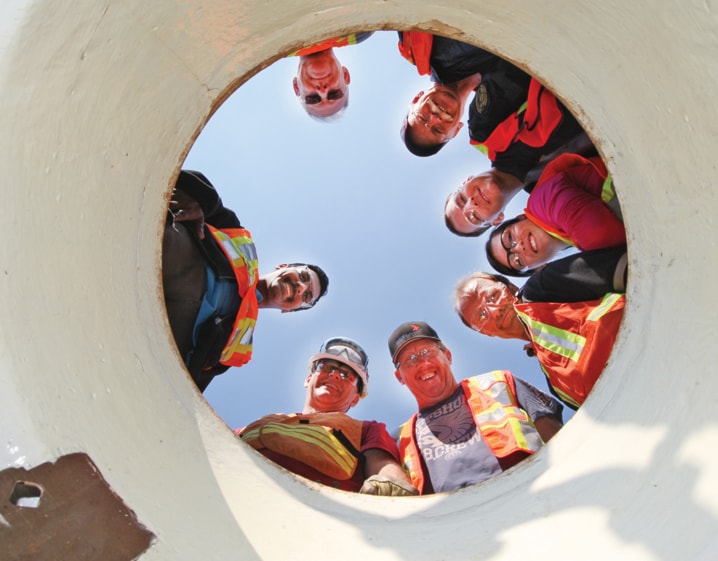Central Alberta first responders were all aboard for a session on the basics of train cars, so they are prepared should disaster strike as it did nearly 13 years ago.
On Feb. 2, 2001, a ruptured tank car leaked 71 tonnes of anhydrous ammonia during a train derailment near the Canadian Pacific Railway yard in Red Deer below the 67th Street overpass at Hwy 2.
About 1,300 northwest Red Deer residents were evacuated for 37 hours.
Red Deer resident Michael Jackson, 53, who was walking near the tracks at the time of the accident, died four months later from respiratory injuries due to ammonia exposure.
A Transportation Safety Board of Canada report on the 2001 train derailment and chemical spill noted the performance of emergency response workers “mitigated the risks of the emergency and expedited the cancellation of the evacuation notice.”
Since Saturday, members of seven local fire departments, businesses, RCMP and city officials have participated in a Transportation Community Awareness Emergency Response (TransCAER) training workshop at the Red Deer Fire Training Centre.
For many responders, it was the only time they would be on top of or inside a rail car.
A general purpose railroad tank car was converted into a classroom with the bits and parts displayed for a hands-on experience. The rail car travels coast to coast for training purposes.
Randy Mak, TransCAER Prairie region chairman, said the instructors do not tell firefighters how to respond because most are professionals. He said they give the responders a better understanding of a train should they be called to an emergency at a rail yard.
TransCAER helps member organizations of the Chemistry Industry Association of Canada and Responsible Care members inform communities about the risks and the safeguards related to the movement of chemicals in their vicinity, and ways to respond effectively to transportation incidents.
Often they are the first on the scene because of the territory of the rail lines, he said.
“They can recognize a few of the items that might be going on and how to deal with them or pass on the message that they know what’s going on,” said Mak.
In light of the recent Lac-Megantic, Que., train disaster, there has been more talk about the safety of chemicals and dangerous goods travelling through communities.
And Mak said communities and individuals are asking more questions about what to do in the event of an incident.
Karl Tirschmann, a Canadian National Railway dangerous goods officer and instructor, said transportation of chemicals by train is extremely safe and the odds of a major incident is rare.
“You only hear the incidents but you never hear about the millions of cars that travel safety every day,” said Tirschmann.
The training sessions wrap up on Wednesday. Members of the public are welcome to attend. Students will learn the train basics, the different types of train cars, chemical information, emergency response chain of command and more.
For more information, contact TransCAER at www.transcaer.com or Mak at 780-974-6606.
crhyno@www.reddeeradvocate.com
